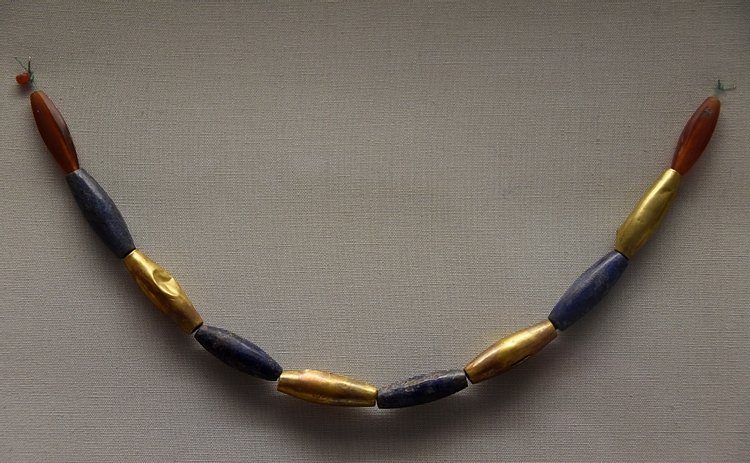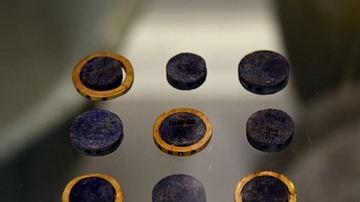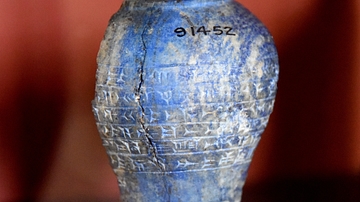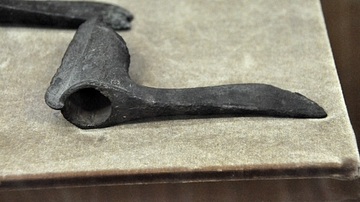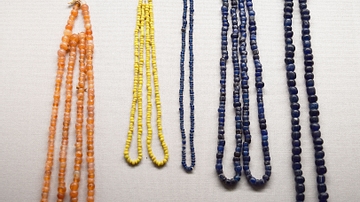Server Costs Fundraiser 2024
Illustration
This is a group of barrel-shaped beads of bitumen overlaid with four gold, four lapis lazuli, and two faceted cornelian beads. This jewellery was found by Puabi's thighs inside her grave, which might possibly have formed part of her belt. Puabi was a Semitic Akkadian woman from Ur, c. 2600 BCE, possibly a queen or priestess. Early Dynastic Period, circa 2600 BCE. From the Royal Cemetery at Ur, Southern Mesopotamia, modern-day Iraq. Part of objects allotted to the British Museum from Ur excavation season 1927-1928 CE. (The British Museum, London).
About the Author
Cite This Work
APA Style
Amin, O. S. M. (2018, February 23). Puabi's Belt of Gold, Lapis Lazuli, and Carnelian Beads. World History Encyclopedia. Retrieved from https://www.worldhistory.org/image/8108/puabis-belt-of-gold-lapis-lazuli-and-carnelian-bea/
Chicago Style
Amin, Osama Shukir Muhammed. "Puabi's Belt of Gold, Lapis Lazuli, and Carnelian Beads." World History Encyclopedia. Last modified February 23, 2018. https://www.worldhistory.org/image/8108/puabis-belt-of-gold-lapis-lazuli-and-carnelian-bea/.
MLA Style
Amin, Osama Shukir Muhammed. "Puabi's Belt of Gold, Lapis Lazuli, and Carnelian Beads." World History Encyclopedia. World History Encyclopedia, 23 Feb 2018. Web. 27 Jul 2024.

